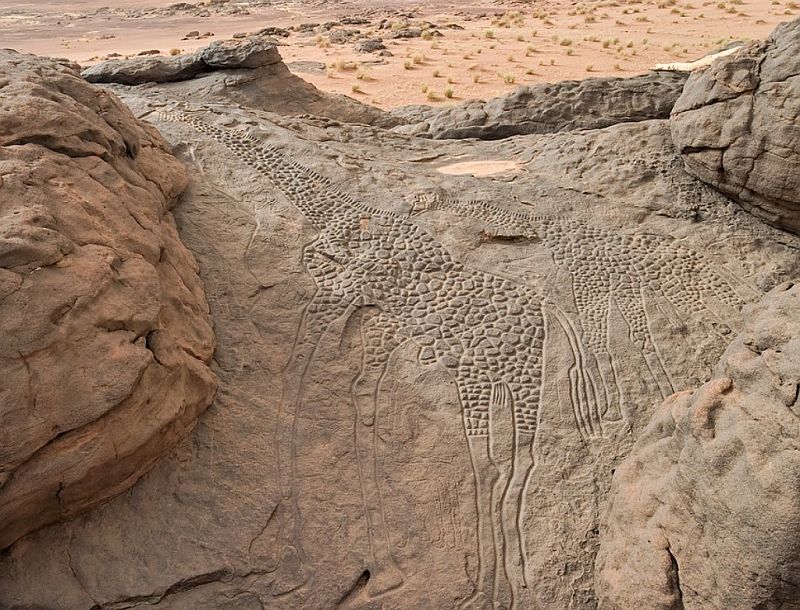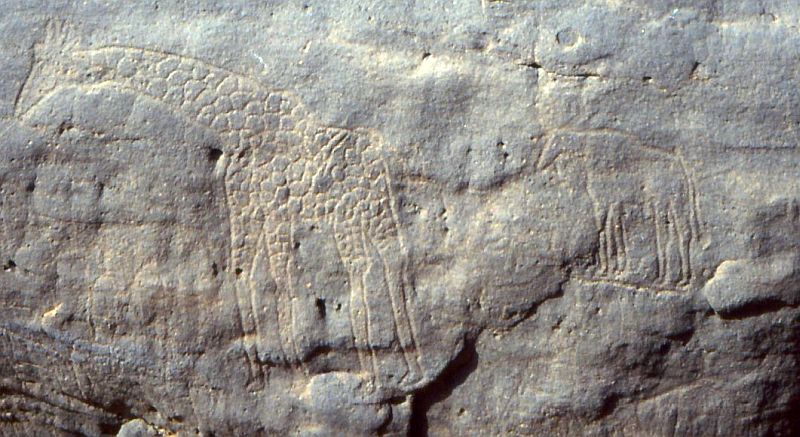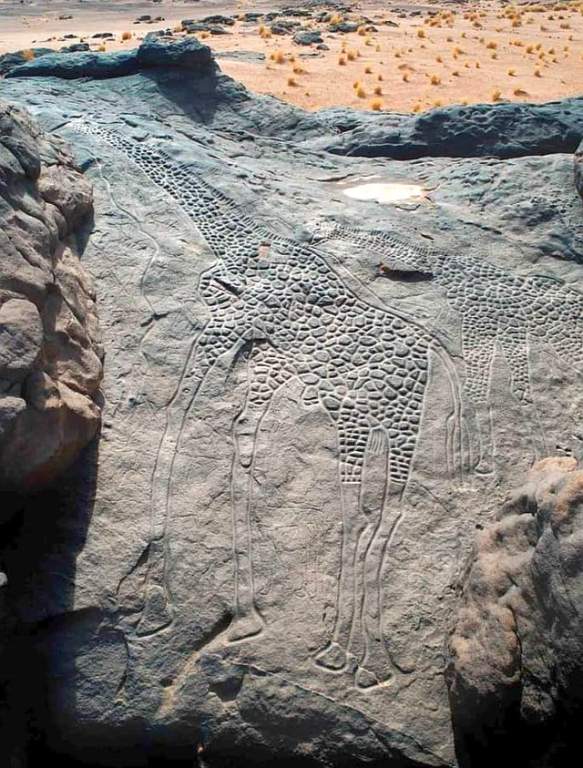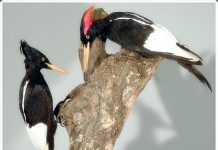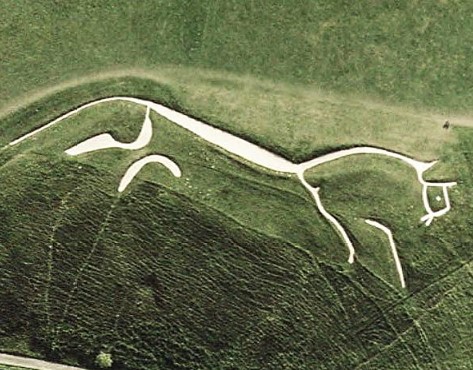The “Dabous Giraffes” are the world’s largest animal rock petroglyphs, situated a short distance from the Trans-Saharan Highway and roughly 110 km north of Agadez, on a sandstone outcrop in the Ténéré desert in the initial foothills of the Aïr Mountains. The carvings are thought to have been completed between 12000 and 7000 BC, during the African Humid Period (14500–5000 years ago), when the Sahara was an enormous savannah spanning thousands of miles. The region also contains petrified wood remnants, which provide a testament to the region’s ability to support human and animal life.
The six-meter-tall carvings feature two intricately carved giraffes on “Dabous Rock.” The giraffes in Dabous Rock are depicted in exquisite detail, with one being male and the other, smaller, female. It has gained recognition for its outstanding rock art in more recent times from a broader worldwide audience. Climbing onto the boulder is the only way to see the markings, as they are not visible from the ground. And before the Tuareg? Life in what is now the Sahara has changed throughout the millennia in a variety of ways. One example of this ancient occupancy can be located at the top of a desolate rocky outcrop.
The reason behind the giraffe’s selection for this particular therapy is beyond our comprehension; it might have been attributed to a variety of physical, behavioral, environmental, or symbolic variables. The French archaeologist Christian Dupuy originally noted these giraffe engravings in 1987. David Coulson later photographed the site in 1997 and took more notes. But in 2001, a site known as Gobero was found, which offers an insight into life in this area during the period when the Dabous Giraffe carvings were created. Archaeological data can assist in providing a picture of the environment, social structure, and material culture at the time of the engravings, even though the Gobero inhabitants may not have been the painters responsible for Dabous.
The deterioration of engravings due to human activity led to the creation of a display mold of engravings. Agadez Airport has an aluminum cast of this mold on display. Every giraffe has a miniature human figure positioned at the end of an etched line that originates from its mouth or nostrils. The Bradshaw Foundation is a group devoted to the preservation and safeguarding of this petroglyph. Shifting desert sands concealed glyphs for millennia.
This region of Niger has approximately 800 figures engraved into the rocks, out of which 704 are animals (cattle, giraffes, ostriches, antelopes, lions, rhinoceroses, and camels), 61 are human beings, and 17 are Tifinâgh inscriptions. This motif is common in rock art from the Sahara, but its meaning is still unclear. Possible interpretations include the following: the line might suggest that giraffes were hunted or even domesticated; it may symbolize a spiritual, mythical, or cultural association; or it might represent a later addition of human beliefs and lines.
It is probable that a harder substance, like flint, was used to incise the soft sandstone; petrified wood chisels can be found in the nearby desert sands, and these would have been useful for honing and polishing outlines. Sadly, human activity has ruined the artwork—theft of individual pieces, graffiti, and trampling. However, deterioration was apparent; despite their isolation, the location was drawing increasing attention as these remarkable sculptures started to bear the scars of both intentional and unintentional human degeneration. Consequently, permission from UNESCO and the Nigeran administration was obtained, and in 1999, the process of creating a mold of the engravings was carried out to rebuild them.
In order to guarantee the integrity of the site’s future preservation, a nearby well was excavated to provide water for a planned small village. One of the community members would serve as a permanent guide, indicating where to mount the outcrop, where to best view the petroglyphs without trampling on them, and how to prevent theft or damage.
Read More: Guelta d’Archei – A Hidden Treasure of Sahara Desert

